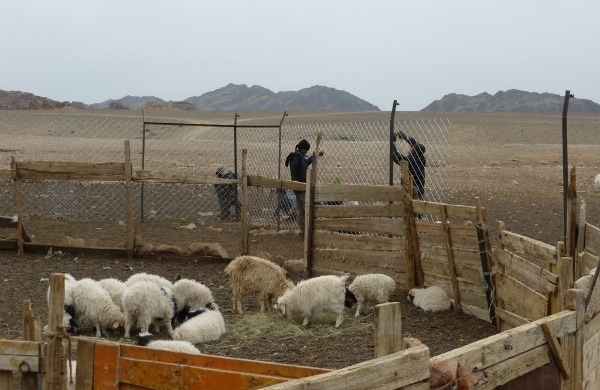
Predator Proof Corrals
2023-12-22• Tost Tosonbumba Landscape approach• admin
In order to foster an even stronger acceptance of snow leopards among local herders, we’re also working on preventing livestock losses from happening in the first place – by creating incentives for more careful herding practices, and by building predator-proof corrals with herding communities.


Livestock losses to predation are part of everyday life for many herding communities in Mongolia. In some of our program areas, an average household will lose roughly one animal per year, which can equal about one monthly income for a family. As a result, snow leopards and other predators are sometimes persecuted and killed by herder.
A significant percentage of predation incidents on livestock happens at unsecured corrals. If the predator manages to enter a corral where livestock are confined, results can be catastrophic for herders, as the cat’s instincts might lead to it killing several animals in one incident.
Predation incidents also occur in pastures, particularly on livestock that’s left to roam freely, or on stragglers that have been separated from the herd.
In some cases, herders catch a snow leopard in the act, and shoot the cat to protect their livestock. Other times, the damage is discovered the next day. Either way, tolerance for the predator suffers, and retaliation often appears to herders as their only option.
Preventing predation directly helps reduce a major threat to snow leopards, and is an immediate response to a pressing issue for many communities in snow leopard habitat. It’s often an excellent project to build a relationship of mutual trust.
Depending on the area, and the prevailing herding practices, predator-proofing can take on different forms.
After experimenting with different approaches, our team has found fences to be the best solution to keep predators away here. Results have been very encouraging: none of the 10 families participating in our 2014 corral pilot project in the South Gobi have suffered further livestock losses.
In all our corral improvement projects, we partner with the local community on sharing costs, and corral owners usually provide much of the labor. This not only reduces the financial investment, but also creates a sense of ownership and responsibility in the community.
Snow Leopard Conservation Foundation
Address: # 602, Khan-Uul Tower, Sharav Street 5, Chingis Avenue, 3rd horoo Khan-Uul district, Ulaanbaatar 17042
Phone: 93329632
Email: info@snowleopard.mn
